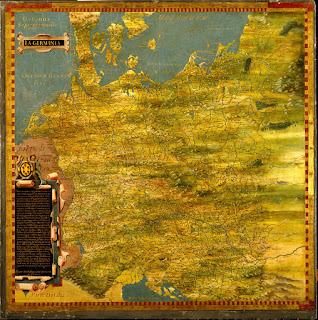by guest author Tyrean Martinson
1. The character pops into my head, usually
after I’ve asked myself a “what if” question about something:
·
What if the victim of bullying is bullied by shunning
because of something dangerous he did as a child? (“Seedling”)
·
What if a young swordswoman becomes the
unexpected recipient of a blade of power that others think should belong to
them? (original prompt for Champion in
the Darkness)
·
What if a reluctant young bride has woven
protection for herself into her traditional bridal gown? (Current WIP)
2. The “what if” question creates spin-off
questions for me:
·
What did the bullying victim do to be shunned?
What if he wanted to change?
·
What if the swordswoman’s country was attacked
before she received the blade of power?
·
Why is the bride reluctant? What if she’s being
“sold” into a polygamous marriage? What if her wedding party is attacked by
bandits?
3. I start to create character profiles. I
don’t worry about getting everything down, but I want to know these areas:
·
Name
·
Family “status” and who their family members
are, if that’s important to the story
·
His/her place in their society
·
His/her strengths and at least one weakness
·
His/her heart’s desire in the scope of the story
·
I work on the physical attributes next, but this
one stumps me sometimes because my descriptions seemed to start sounding alike
from character to character.
As I write the story, I add to the
character profiles.
4. I pick images for my character. I look for:
·
Facial features that stand out
·
Outfits that my character would wear
·
Weapons they might or might not carry -
briefcase, backpack, musical instrument or sword?
·
Vehicle they might drive/fly/own/want
 |
| “Sunbeam” Photo Credit: Tyrean Martinson |
·
General images that might capture how the
character sees the world
For all of these, I use pinterest and take some of my own
photos. I know I’m not great at physical descriptions, so this step has huge
importance for me, and I often create collages that I print out and stick to my
wall above my desk.
5. If I’m struggling with a character, I write
“out of book” scenes that take me back to his/her childhood, or take me to a
scene that would never actually happen in the book. I ask myself more questions
along the way:
·
Why does this character hate the color orange?
Did that come from a childhood incident of some kind? What other ways did that
incident change this character?
·
OR What would a sword-wielding fantasy heroine
do if she landed in the local McDonald’s or Starbucks with her best friend?
What if she landed there with her enemy? What would she do there and why?
Other variations on
how I create and develop characters:
1.
I find a picture first and start asking
questions about the person in the image.
2.
I watch a few movies in the same genre and
listen for dialogue pacing. (This is an area I hope to expand on in the next
year or so since I struggle with creating dialogue.)
Tyrean
Martinson
Latest Book: Flicker:
A Collection of Short Stories and Poetry is an exploration of many
characters and their views of the world.
How do you create and develop characters?





























